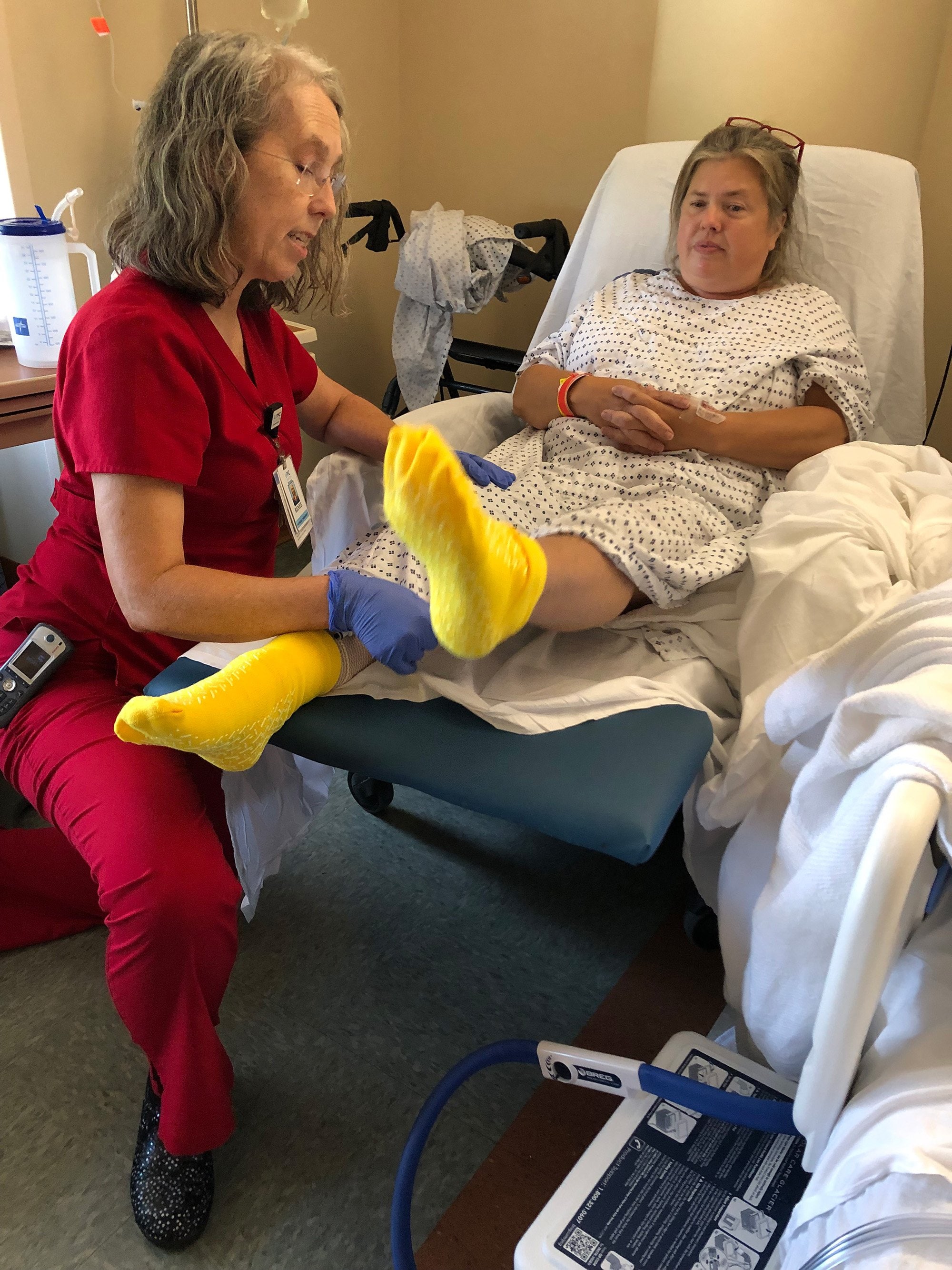Nurse navigator helps patients prepare for joint replacement
Orthopedic surgeons now using robotic-assisted platform to more precisely align implants
If anyone needed a perfect knee replacement, it’s Nicole Showell of Clayton.
As a full-time caregiver for her mother-in-law, Zelma, she navigates stairs several times daily in their two-story Glen Laurel home, delivering medications, meals and other care.
Read More
In the Joint Adventure class at UNC Health Johnston, patient navigator Lisa Allen shares the cautionary tale of a man who felt well enough following hip replacement surgery to walk a quarter of a mile to his mailbox.
Halfway up the path, he ran out of energy, collapsed, fell and dislocated his new joint. His wife, who was returning home after running an errand, found him in the middle of the driveway. He had to go back to surgery.
Fewer than 5% of patients are readmitted to the hospital following their knee and hip replacement surgeries at Johnston. Even fewer —3.4%—have complications, which is better than the national average.
Allen knows that educating and preparing patients is key to maintaining those strong outcomes. In her pre-operative class, she explains what to expect and what to do before and after surgery. And for punctuation, she sprinkles in anecdotes, practical tips and some straight talk.
“You’re going to have good and bad days,” she tells patients. “Don’t overdo it. And don’t even think about getting on a tractor or lawnmower. You’re not well. The body takes twice as long to heal on the inside as it does on the outside.”
When Allen accepted the role as navigator in 2022, she had just retired as a nurse after 15 years of caring for joint replacement patients. Compared to earlier practices, care teams now get patients up to walk sooner.
 Donna Moore, 57, of Meadow, felt Allen was speaking directly to her during class. "I help my brother tend the family farm, so I probably would have gotten back on the tractor too soon," she said. While the patient guide was helpful, the class captured Moore's full attention. "She brought the material to life," Moore said.
Donna Moore, 57, of Meadow, felt Allen was speaking directly to her during class. "I help my brother tend the family farm, so I probably would have gotten back on the tractor too soon," she said. While the patient guide was helpful, the class captured Moore's full attention. "She brought the material to life," Moore said.
Allen prioritizes three things for successful recovery: pain control, motion and safety. “It’s going to hurt,” she tells patients. “But the pain of the incision will go away after a few weeks, and it will be less than the bone-on-bone pain you’ve experienced for the past several months.”
To heal more quickly, she encourages patients to follow the exercises directed by physical therapists during their home visits and to stay ahead of the pain by taking pain medications on schedule. “If you don’t push through the pain, the joint will stiffen up and you’ll need surgery,” she adds.
To reduce swelling around the incision, patients go home with a cold therapy system. Allen recommends freezing a dozen bottles of water rather than buying ice to refill the cooler.
Safety starts with a coach. For the first five to 10 days after surgery, patients need someone to take care of them. Beyond 10 days, they’ll need someone close by to help with their instability, she says.
Allen and nurse manager Christy Collins offer their phone numbers and follow up with patients while in the hospital and then at home to answer questions and ensure they have everything they need.
"I tell patients they've chosen joint replacement surgery because they want a better quality of life," Allen said. "And that's what they will get."
Pictured: Renee Wooters, physical therapy assistant, works with Donna Moore on lifting her legs before getting up to walk. She was preparing to go home following knee replacement surgery the day before.